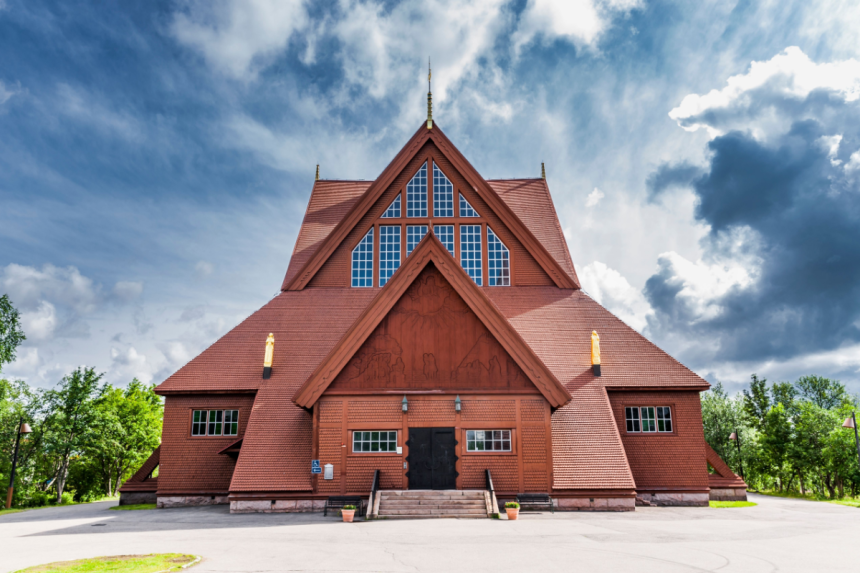A Monument on the Move
In northern Sweden, one of the country’s most iconic landmarks is on the move. Kiruna Church, a 113-year-old red timber structure, is being relocated in its entirety due to ground subsidence caused by more than a century of iron ore mining. The massive building, 35 meters high and weighing 672 tonnes, is being transported 5 km (3 miles) to the city’s new center at a cautious pace of 500 meters an hour, with the journey expected to take two days.
The relocation is part of a broader effort to safeguard Kiruna’s infrastructure from fissures that threaten water, electricity, and sewage systems. Crowds gathered to watch as engineers carefully moved the church using steel beams and self-propelled modular transporters. The move began with a blessing ceremony led by Vicar Lena Tjärnberg and Bishop Åsa Nyström.
Engineering and Symbolism
The operation represents both a technical feat and a cultural milestone. Engineers widened roads, removed lamp-posts and traffic lights, and even dismantled a bridge to make way for the enormous structure. Project manager Stefan Holmblad Johansson, who also sings in the church’s gospel choir, described it as “a historic event” with no margin for error. Interior treasures, including the organ with its 1,000 pipes and a great altar painting by Prince Eugen, remain inside the church, stabilized and protected throughout the move.
Unlike other relocated buildings in Kiruna, which were often dismantled or rebuilt, the church is being transferred intact. It was previously voted Sweden’s most beautiful pre-1950 building, making its preservation a matter of national pride.
A City Rebuilt Around Mining
Kiruna, located 145 km north of the Arctic Circle, has been undergoing a dramatic transformation as mining operations expand. Swedish law prohibits mining beneath existing structures, prompting a city-wide relocation program financed by mining operator LKAB. The bill for the move is estimated at more than 10 billion Swedish krona ($1 billion). Other notable structures, including historic homes and the old city hall’s clock tower, have already been moved.
For many residents, however, the church’s relocation is the most symbolic. “The church has served as a spiritual center and gathering place for generations,” said culture strategist Sofia Lagerlöf Määttä. “Moving it is like moving our memories into the future.”
Community and Heritage
The relocation has become a deeply emotional moment for locals, drawing crowds and international visitors alike. Swedish television is broadcasting the journey live as “slow TV,” highlighting the historic significance of the move. While some feel sorrow at leaving the church’s original site, others express gratitude that it is being preserved intact rather than dismantled.
If all goes according to plan, the church will arrive safely at its new location by Wednesday evening, standing as both a preserved architectural treasure and a symbol of resilience for a community adapting to the realities of modern mining.






